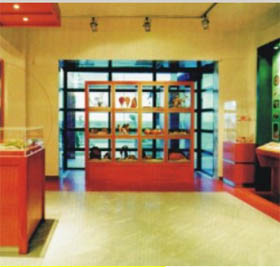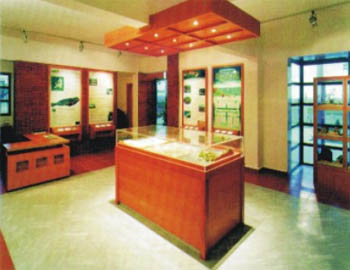Example: The contribution of Information Centres in the sustainable tourism in protected areas: the case of Strymonikos Gulf
Dr. Koutrakis Emmanuil
National Agricultural Research Foundation - Fisheries Research
Institute
The «Information Centre for the coastal zone of the Strymonikos Gulf and the Gulf of Ierissos» was established in 1998 under the LIFE project "Concerted actions for the management of the Strymonikos coastal zone", which was carried out by the Fisheries Research Institute of the National Agricultural Research Foundation and the Greek Biotope/Wetland Centre of the Goulandris Natural History Museum. The Information Centre (IC) is now under the responsibility of the Municipality of Agios Georgios (Central Macedonia, Greece).
The main role of the Centre consists in contributing to information and public awareness in matters of coastal zone functions and values, using as examples the Strymonikos Gulf and the Gulf of Ierissos, whose coastal zone diversity is typical for Greece. It is the first IC in Greece dealing exclusively with matters associated to the coastal zone.
Visitors of the IC have the opportunity to see an exhibition area with dashboards organised in 10 thematic units and rich photographic material clarifying the term "coastal zone". It provides information about the sea life, local plants and animals, stresses its historic and cultural value and highlights the potential environmental problems that may arise from human activities. Three aquaria host local fish species, while the shell exhibition puts forward the shell diversity of the area and the entire Greek coastal territory. In the centre of the hall 3D presentations (models) present the bas-relief of the area, the estuary of the Strymon River and a characteristic rocky coast of the area. At the same time, in the projection room, visitors can watch a 25-minute educational film about the coastal zone of the Strymonikos Gulf.
The success of the IC is noted by the record of about 3,000 visitors per year, primarily from schools of the area, who visit the IC outside the main tourist season. This case shows clearly how the information or interpretation centres can contribute to the public awareness and the education of the visitors of a protected area, by briefing them with a first description of the area (through maps and photos), by showing them the functions and values of the area and by explaining them how they should behave during their visit in an environmentally sensitive area. Moreover the ICs can work as focal points for alerting authorities on emerging threats and finally can attract a large number of visitors (schools, organised groups, etc.) in an area, where they can be informed and guided during their visit, promoting the sustainable tourism.

